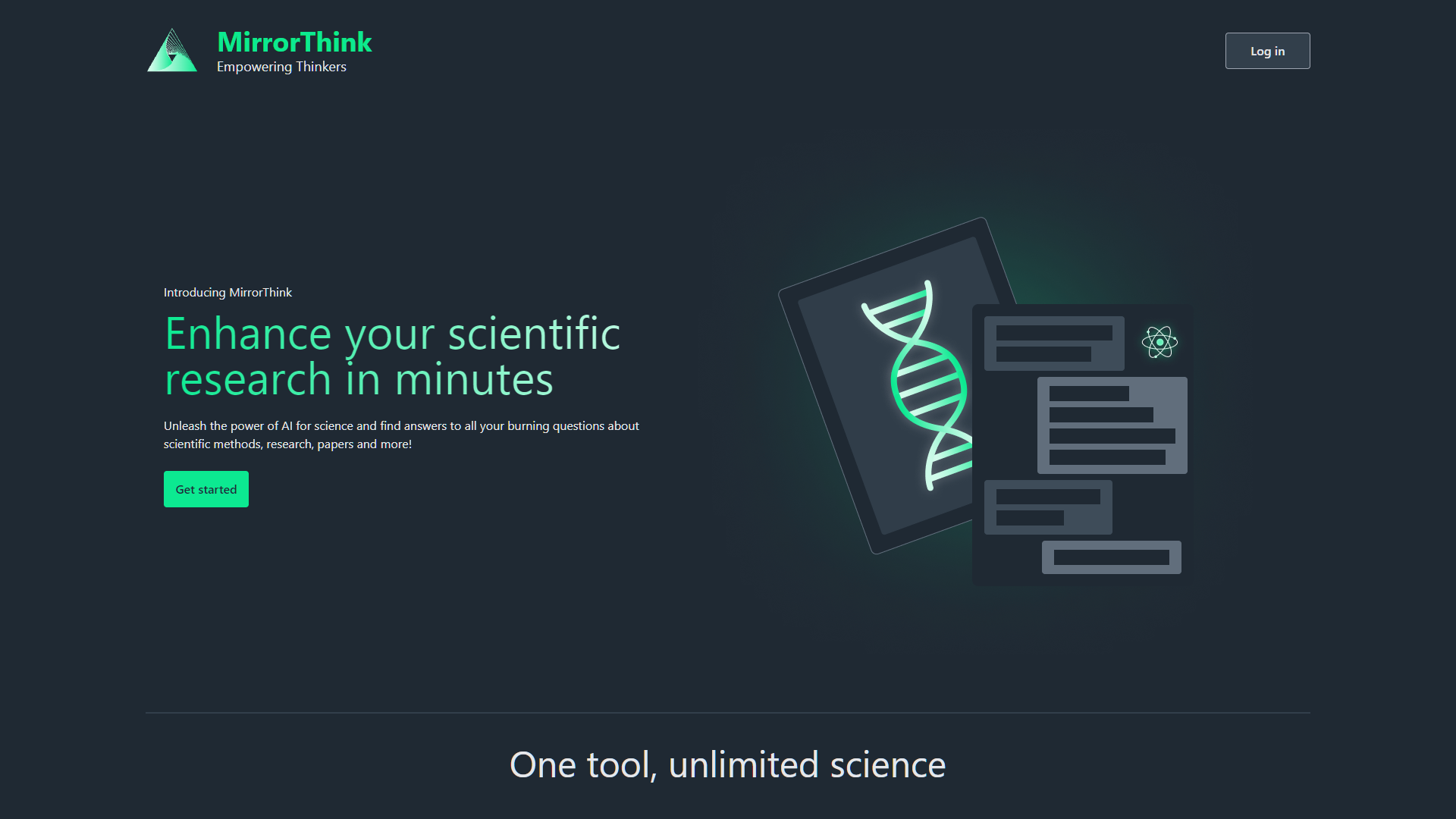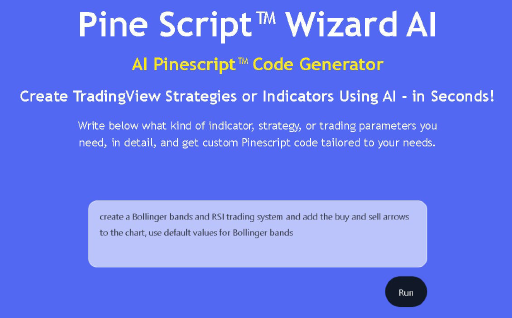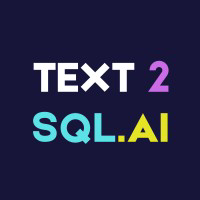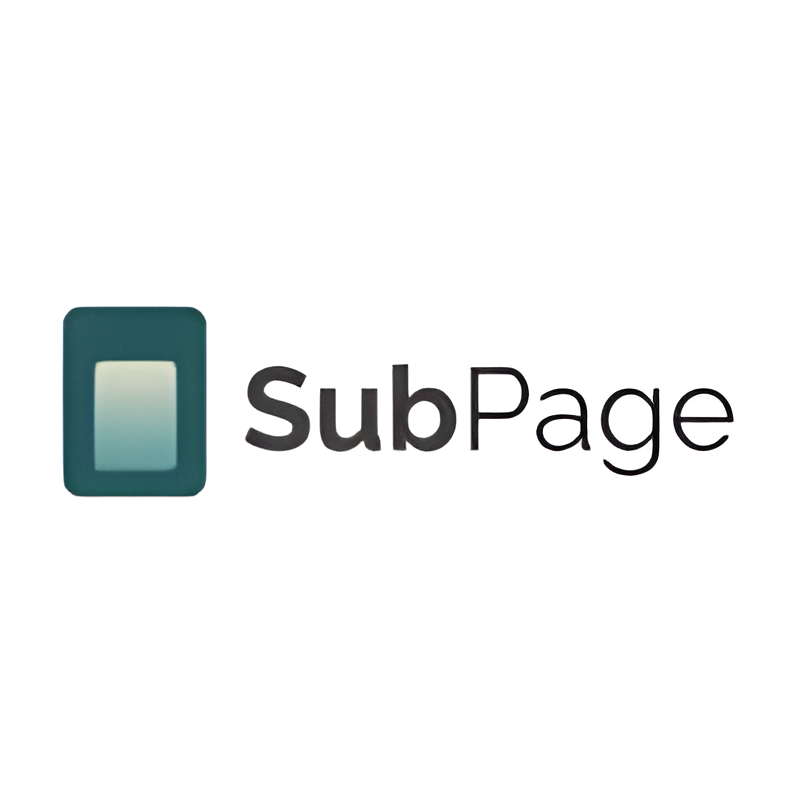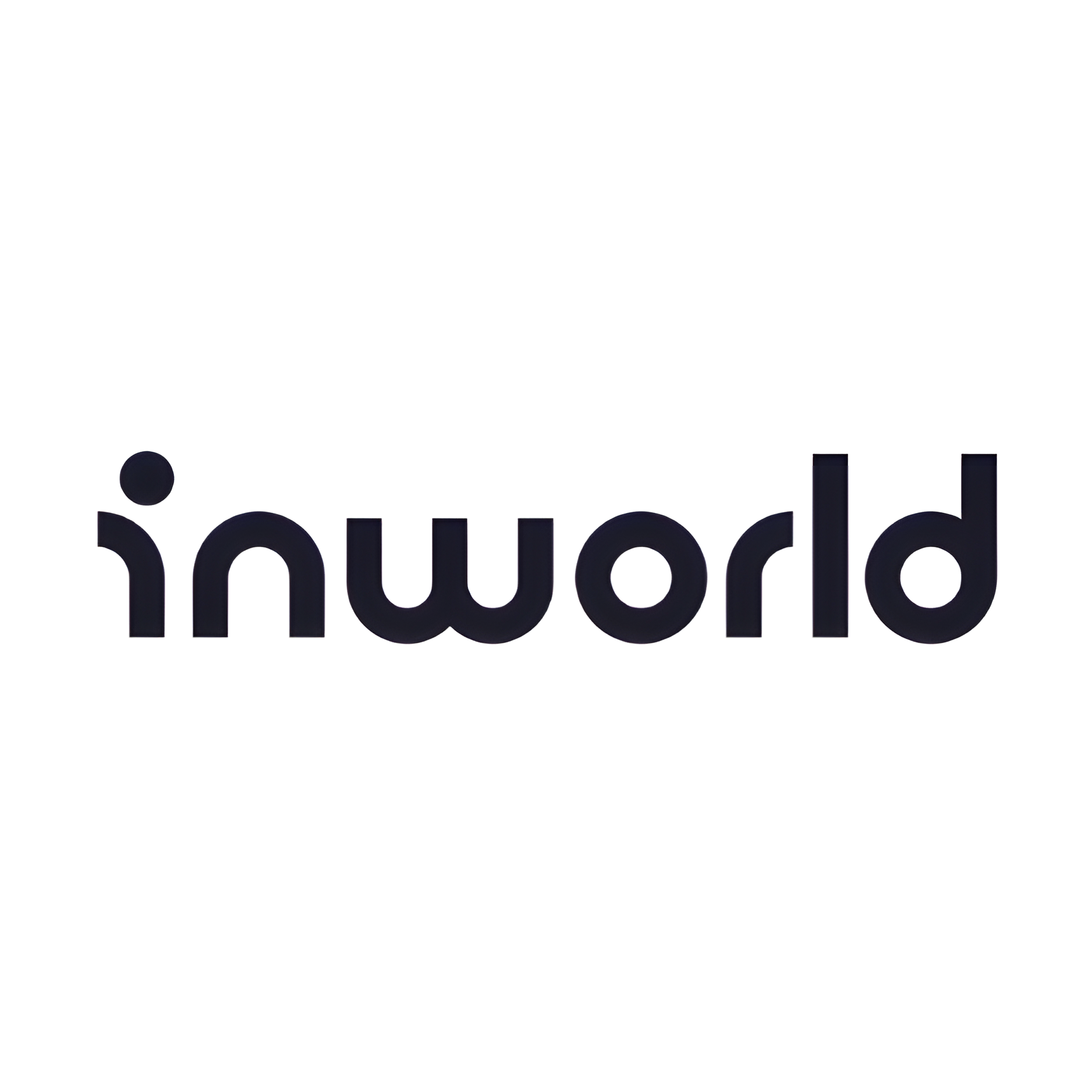Overview
MirrorThink is an innovative AI-powered tool specifically designed to revolutionize the way scientific research is conducted. By harnessing the capabilities of GPT-4, one of the most advanced AI models available, MirrorThink offers researchers a multifaceted platform where they can effortlessly find answers to complex scientific questions, analyze academic papers, perform intricate mathematical calculations, and execute comprehensive scientific market research.
This tool stands out by integrating seamlessly with renowned services such as Wolfram for computational intelligence and Pubmed for access to medical and life sciences literature, ensuring that the data provided is not only vast but also accurate and reliable. The integration of these services enhances the tool's ability to deliver precise and timely results, catering to the diverse needs of the scientific community.
Getting started with MirrorThink is straightforward. Researchers simply need to sign up on the platform, where they can immediately begin to explore its various features. The user-friendly interface ensures that even those new to AI tools will find navigating and utilizing the platform a smooth experience. With MirrorThink, researchers can expect to receive answers within seconds, significantly accelerating the pace of their research and empowering them to achieve more in less time.
Key features
- Integrated AI capabilities: Utilizes GPT-4 to provide advanced analysis and interpretation of scientific data, enhancing research accuracy and depth.
- Comprehensive scientific database: Connects with Wolfram and Pubmed to access a vast range of scientific publications and data for thorough research.
- Real-time answers: Delivers immediate responses to scientific queries, facilitating faster progress in research projects and decision-making.
- Mathematical computation: Offers robust tools for performing complex mathematical calculations essential for scientific analysis and experimentation.
- Market research analysis: Equipped to conduct detailed scientific market research, helping users understand market trends and opportunities.
- User-friendly interface: Designed for ease of use, allowing both novice and experienced researchers to navigate and utilize the platform effectively.
 Pros
Pros
- Customizable workflows: Allows users to tailor the interface and tools to fit their specific research needs, improving efficiency and productivity.
- Collaborative features: Supports team projects by enabling multiple users to work simultaneously and share data securely, enhancing teamwork and communication.
- Data visualization tools: Provides advanced graphical representations of data, making complex information easier to understand and interpret.
- Scalable infrastructure: Designed to handle increasing amounts of data and more complex queries without loss of performance, suitable for growing research demands.
- Multi-language support: Accommodates a diverse user base by offering the platform in several languages, increasing accessibility and usability worldwide.
 Cons
Cons
- High dependency on connectivity: Requires constant internet access to utilize AI, database, and computation features, limiting use in low-connectivity areas.
- Over-reliance on AI: May reduce critical thinking and manual analysis skills as users depend heavily on automated AI interpretations and solutions.
- Data privacy concerns: Integrates with multiple databases and AI, raising potential issues regarding the security and privacy of sensitive research data.
- Limited customization options: While user-friendly, the interface and functionalities may not fully cater to all specific user needs or preferences in scientific research.
- Resource-intensive application: Demands significant computational resources, which might hinder performance on less capable hardware or systems.


